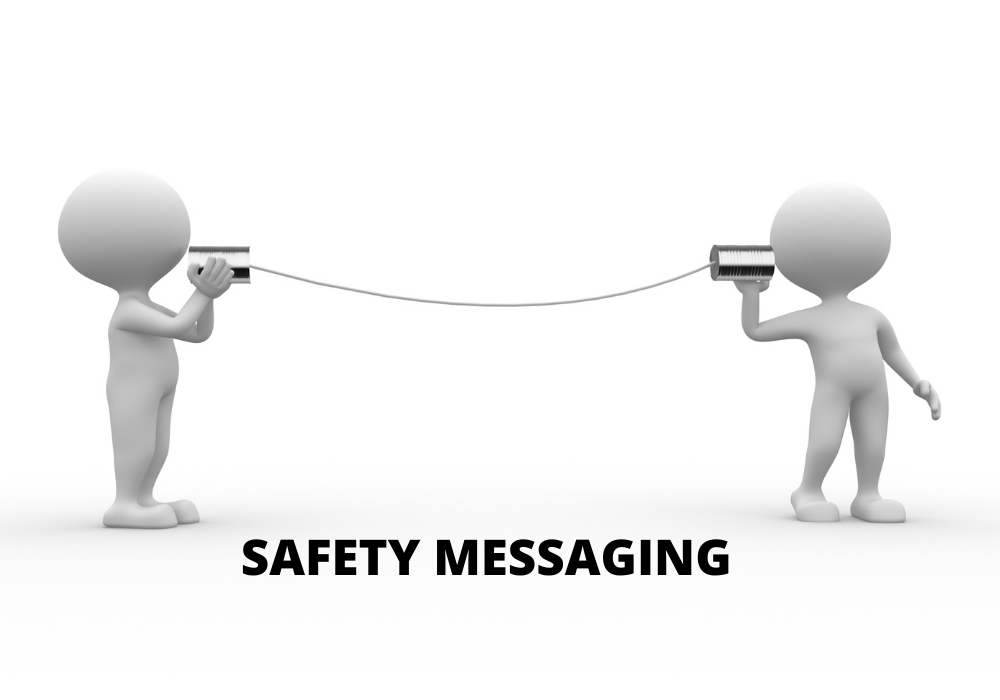Whether you need to find support for a new safety initiative or need to bring your team on board with a critical safety concept, safety storytelling is a basic business skill that can help you improve your reach and implementation of safety communications across a business. How do you create a compelling narrative when you have a safety initiative to implement?
Luckily, it’s a skill that can be learned. If you’d like to get started, what follows are seven basic techniques that you can use to make your sales pitches more persuasive.
Think about who your audience is
A compelling work safety communication is always personalized to the audience it is aimed at. Whether it is to a work group that you need to convince of the merit of an idea, your clients, or your colleagues, learning everything you can about them — what they consider important, what they care about — can help you understand how to present your idea as a potential solution to their pain points.
It’s important to go in asking yourself a few questions:
• Whom do you plan to target, and what kind of situation are they in?
• What do you hope to get them to do?
• How do their thoughts or feelings need to change if they are to take the action you hope for?
Understanding the mental state of your target audience is your first step to becoming a successful storyteller.
Think about your work safety structure
Talented safety storytellers can put their ideas and facts together into cogent narratives that feel fluent. A story that flows requires four important structural parts.
• The setting: If your objective is to reach its target, your audience needs to be made aware of the context or background that your story is set against. Is it a past incident or accident? Describing to your audience the trends and data that form this background can help you set them up mentally for the ideas that you plan to offer them.
• The characters: Every safety communication requires characters that the audience can emotionally connect to. In your communications, you’ll have vendors, customers, and other key stakeholders. You need to make sure that you describe and build your characters to emotionally hook your audience.
• Dissonance: If your audience is to care about your communication, they need to feel connected to a problem that your safety solution resolves. At some point, soon after your communication starts, you need to present your audience with a conflict that they care about.
• Resolution: Finally, when your audience begins to care about your safety concept, you need to be able to unveil your idea as the one that saves the day. Of course, it must be based around evidence.
READ RELATED
Working from Home | Quick Stretches To Do At Your Desk
Work health and safety during a pandemic | A basic guide for Employers
Identify the main theme of your safety communication
Safety communications that lack a central theme often feel uninteresting. When you ultimately want a specific safety action from your team you must think clearly about the implications and the overall theme you will present. The theme and key takeaway should be brought in early and repeated frequently to give your audience an easy encapsulating idea to hold in their minds.
Make a presentation
When you bring your idea to an audience, often, it’s more likely to make an impression when you give them something to see and read. A spoken description of your idea can be powerful, but visuals and data on top can be more clearly convincing. A PowerPoint presentation can push your point home. Cartoons and images have a role to play in safety communications. The adage that “a picture paints a thousand words” is so true when it comes to safety communications. Use the images and graphics to make your concept clear, interesting and appealing
Keep your communication basic
Stories are often remembered when they are simple and straightforward. When you build your narrative, you want to make sure to cut away any details that don’t do actual work developing the concept or moving the communication forward. You need to be focused on maintaining the attention of the audience and realize that superfluous details often distract from a key safety message.
Put in personal elements
The most effective safety communicators tend to make their stories more compelling by communicating their messages with personal experiences from those that have been affected by poor work safety practices. There’s nothing quite like hearing the impact of a workplace accident on an individual to give people a reason for change. Lacing your safety communications with these personal impacts can bring authenticity to what you want to communicate. The more relatable your story is, the more impactful it becomes.
Put in the practice
Sometimes, managers in organizations believe so greatly in their ability to be effective communicators that they neglect to prepare. Whether you’re a natural or not, it’s important to understand that safety communication is like any art – you need practice. It’s important to write out your messaging in advance, strategically place the right elements in it for maximum impact, and to then rehearse. It can even help to record videos of yourself delivering the concept, to find out how you come across, and to make improvements.
Your communication skills can help you sell a safety message in a positive way. They also inspire the people you work with, share your safety vision, and bring change in an organization.
Safety storytelling is a fundamental a business skill for health & safety professionals. Thinking about the storytelling aspect of the way you bring your safety communications, safety initiatives and ideas to the people around you can help you drive real change in your business.







Leave A Comment